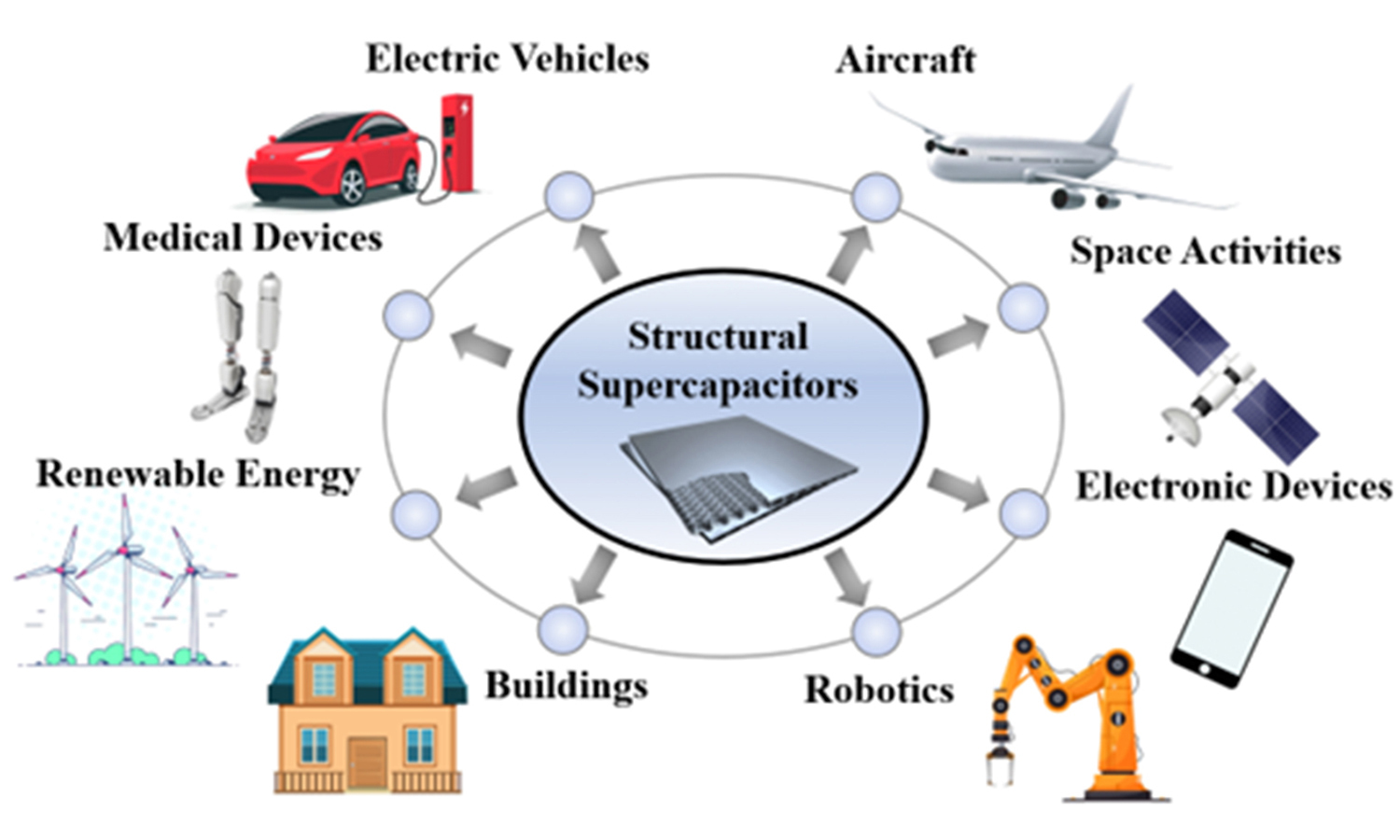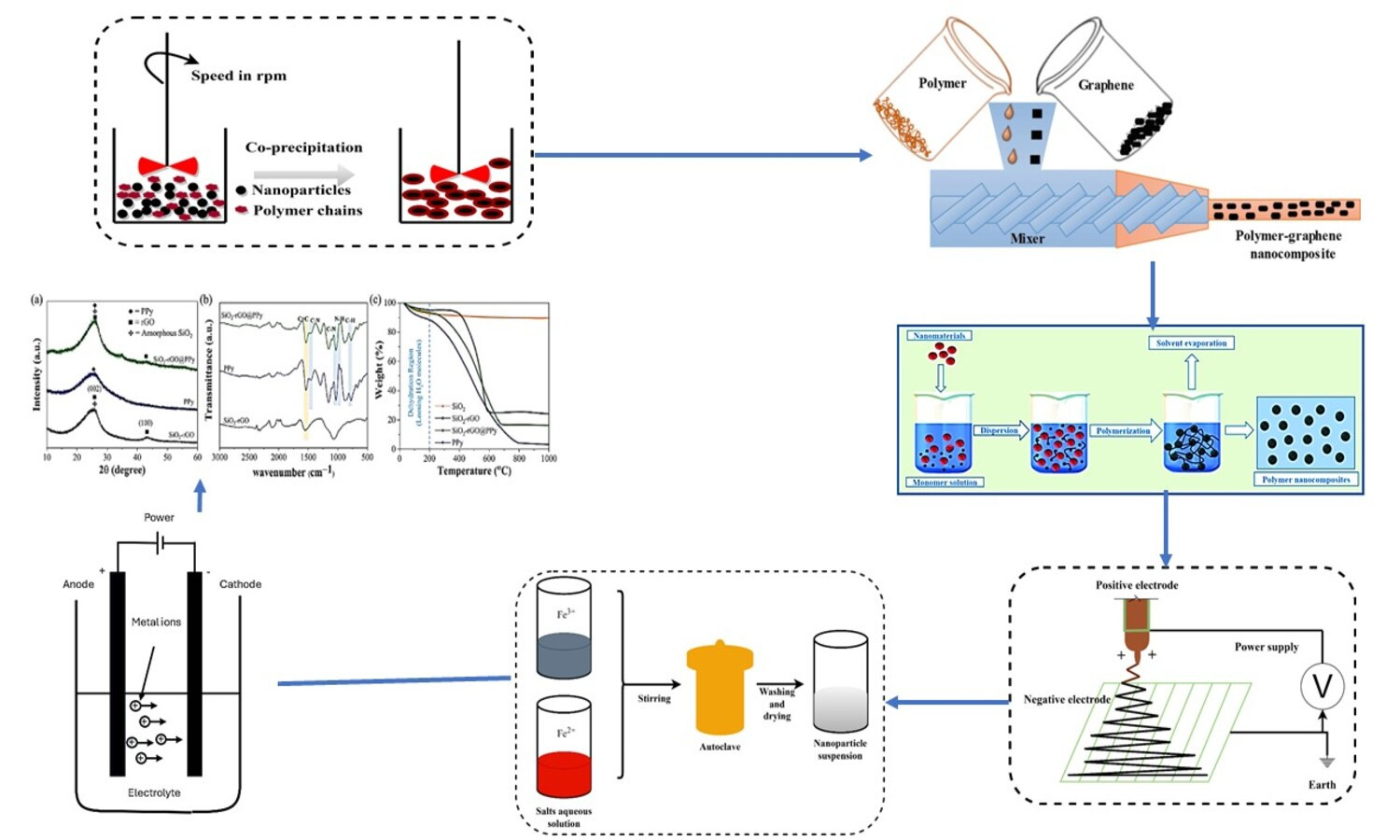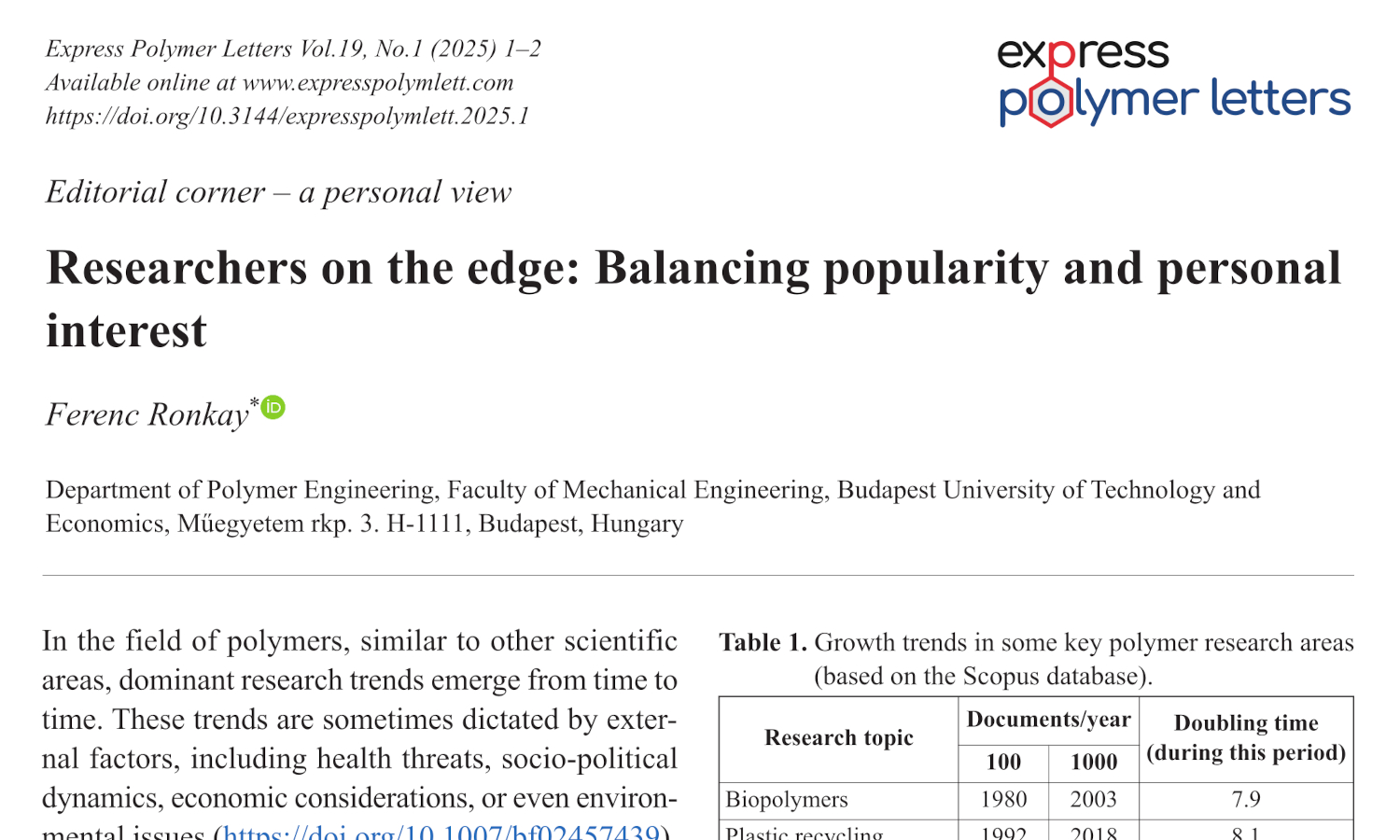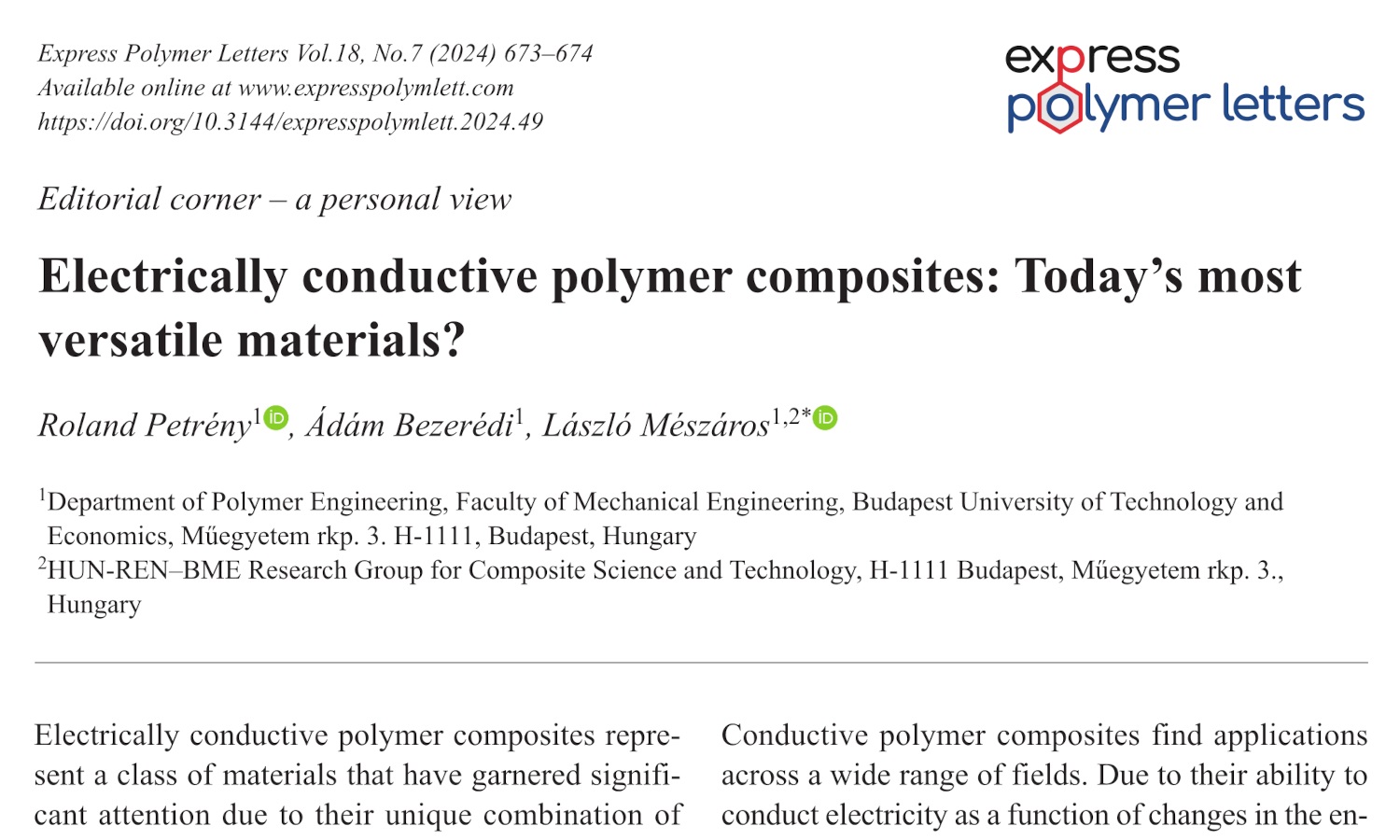Multifunctional energy storage polymer composites: The role of nanoparticles in the performance of structural supercapacitors
Vol. 18., No.10., Pages 1023-1038, 2024
DOI: 10.3144/expresspolymlett.2024.78
DOI: 10.3144/expresspolymlett.2024.78
GRAPHICAL ABSTRACT

ABSTRACT
The article gives an overview of energy storage composites, their materials, manufacturing processes, and applications. Carbon- and metal-based nanoparticles and their relevant properties are presented. We focus on multifunctional structural supercapacitors and their components. Thus, we describe the main structural electrolytes and elements of the structural electrodes. We show that the nanoparticles significantly influence the electrochemical properties of the electrode. For example, carbon-based nanoparticles can achieve low energy density but high power density, while the opposite is true for metal-based nanoparticles. We show that when carbon- and metal-based nanoparticles are used together, a positive synergy is created between them, promoting the development of favorable electrochemical properties in the electrodes. Furthermore, we present structural supercapacitors and possible ways to introduce nanoparticles into the system. Finally, we present a summary of the progress achieved so far and the advancements expected in the future, as well as potential areas where structural supercapacitors could be used.
RELATED ARTICLES
Mathew Olurotimi Adeoti, Tamba Jamiru, Taoreed Adesola Adegbola, Ibrahim Suleiman, Mohammed Abdullahi, Basiru Philip Aramide
Vol. 19., No.2., Pages 208-229, 2025
DOI: 10.3144/expresspolymlett.2025.16
Vol. 19., No.2., Pages 208-229, 2025
DOI: 10.3144/expresspolymlett.2025.16

Polymer nanocomposites are drawing considerable interest in electrical energy storage research owing to their distinctive characteristics and promising roles in various devices, such as batteries, supercapacitors, and fuel cells. This review examines the selection criteria of polymer nanocomposites for electrical energy storage applications and the current advancements in developing and producing polymer nanocomposites specifically tailored for electrical energy storage applications. Key topics covered include the selection of polymer matrices, choice of nanofillers, fabrication techniques, characterization methods, and performance evaluation of the resulting nanocomposites. The impact of nanofiller dispersion, interface engineering, and morphology control on electrical storage properties is emphasized. Proper dispersion enhances uniformity and interfacial interactions, improving electrical, mechanical, and thermal properties. Interface engineering boosts polymer-nanofiller compatibility, while morphology control optimizes nanofiller structure and arrangement for better storage efficiency. Emerging trends, challenges, and future research directions are also discussed, providing insights for developing advanced polymer nanocomposites with improved electrical energy storage capabilities.
Ferenc Ronkay
Vol. 19., No.1., Pages 1-2, 2025
DOI: 10.3144/expresspolymlett.2025.1
Vol. 19., No.1., Pages 1-2, 2025
DOI: 10.3144/expresspolymlett.2025.1

This is an editorial article. It has no abstract.
Roland Petrény, Ádám Bezerédi, László Mészáros
Vol. 18., No.7., Pages 673-674, 2024
DOI: 10.3144/expresspolymlett.2024.49
Vol. 18., No.7., Pages 673-674, 2024
DOI: 10.3144/expresspolymlett.2024.49

This is an editorial article. It has no abstract.




